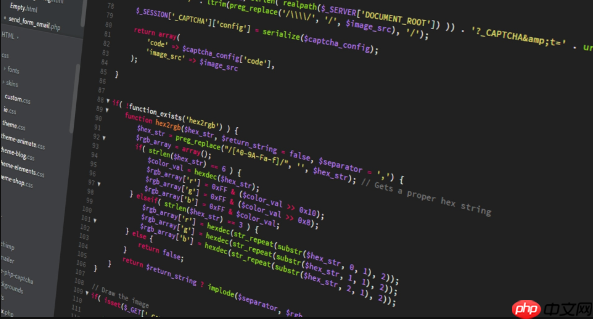安装XAMPP并启动Apache服务器,在htdocs目录创建index.php文件,输入<?php echo "Hello, World!"; ?>,浏览器访问localhost显示结果;2. 使用$定义变量如$name="Alice",通过echo输出;3. 用if-else进行条件判断,如if($age>=18)echo"Adult";4. for循环for($i=0;$i<5;$i++)和while循环while($x<3)实现重复执行;5. 自定义函数function greet($name){return"Hello,$name!";}并调用;6. 用$_POST获取表单数据,如$username=$_POST['username'];7. 创建数组$colors=array("red","green"),用foreach遍历输出。

If you are learning PHP for web development, understanding the basic syntax and usage is essential. Here are practical methods to get started with PHP language fundamentals:
The operating environment of this tutorial: MacBook Pro, macOS Sonoma
1. Set Up a Local Development Environment
Before writing PHP code, ensure you have a server environment that supports PHP. This allows you to run and test scripts locally.
Download and install XAMPP, which includes Apache, MySQL, and PHP. Start the Apache server from the XAMPP control panel. Place your PHP files in the htdocs folder inside the XAMPP directory. Access your files via http://localhost/your-file.php in a browser.2. Write Your First PHP script
PHP scripts start with <?php and end with ?>. This tells the server to interpret the enclosed code as PHP.
立即学习“PHP免费学习笔记(深入)”;
Create a file named index.php in your htdocs folder. Add the following code:<?php echo "Hello, World!"; ?> Open it in your browser to see the output.3. Use Variables and Data Types
PHP supports various data types like strings, integers, booleans, and arrays. Variables begin with a dollar sign ($).
Declare a variable:$name = "Alice"; Display it using: <?php echo $name; ?> PHP automatically determines the data type based on the assigned value.4. Control Structures: Conditional Statements
Control structures help manage program flow. The most common is the if-else statement.
 法语写作助手
法语写作助手 法语助手旗下的AI智能写作平台,支持语法、拼写自动纠错,一键改写、润色你的法语作文。
 31 查看详情
31 查看详情  Use
Use if ($age >= 18) { echo "Adult"; } to check conditions. Add an else block: else { echo "Minor"; } for alternative outcomes. You can also use elseif for multiple conditions.5. Looping with for and while
Loops execute repetitive tasks efficiently. The for and while loops are commonly used.
A for loop example:for ($i = 0; $i < 5; $i++) { echo "Number: $i <br>"; } A while loop: while ($x < 3) { echo "Loop $x <br>"; $x++; } Ensure the loop condition eventually becomes false to avoid infinite loops.6. Define and Call Functions
Functions group reusable code. You can create custom functions or use built-in ones.
Define a function:function greet($name) { return "Hello, $name!"; } Call it: echo greet("Bob"); Functions improve code organization and reduce redundancy.7. Handle Form Data with $_POST and $_GET
PHP can process user input from HTML forms using superglobal arrays like $_POST and $_GET.
Create an HTML form with method="post" and input fields. In the PHP script, retrieve values:$username = $_POST['username']; Always validate and sanitize input to prevent security issues.8. Work with Arrays
Arrays store multiple values in a single variable. PHP supports indexed, associative, and multidimensional arrays.
Indexed array:$colors = array("red", "green", "blue"); Associative array: $ages = array("John" => 25, "Jane" => 30); Loop through arrays using foreach: foreach ($colors as $color) { echo $color; }以上就是php 怎么用_PHP语言基础使用方法综合教程的详细内容,更多请关注php中文网其它相关文章!









